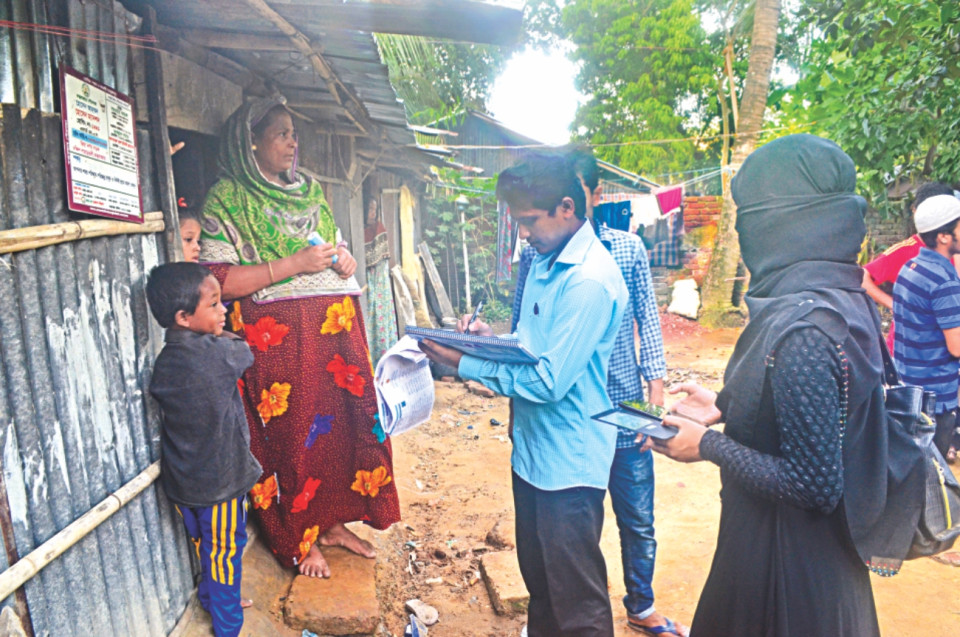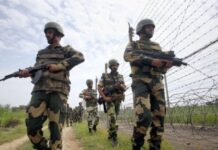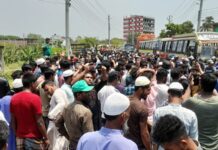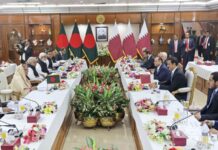First-phase govt census finds them in Cox’s Bazar; more than 32,000 registered Rohingyas live in camps; no repatriation since 2005

Besides the Rohingyas living illegally in Cox’s Bazar, 32,878 registered Rohingyas along with their 5,000 unregistered children live in two refugee camps of the coastal district, bordering Myanmar.
According to the office of Relief and Rohingya Refugee Repatriation Commissioner (RRRC) in Cox’s Bazar, about 2.5 lakh Rohingyas entered Bangladesh in 1978 fleeing Myanmar government’s “Dragon Operations” in Rakhine province.
Almost all of them were sent back through mutual understanding between the two countries.
Again, over 2.5 lakh Rohingyas entered Bangladesh through Cox’s Bazar and Bandarban border points in 1991-92. The government then set up 21 temporary camps for them in the two districts.
With the help of the United Nations High Commissioner for Refugees (UNHCR), the government registered the names of Rohingya refugees in these camps.

Of the 21 refugee camps set up between 1991 and 1992, only two now exist — one at Nayapara in Teknaf upazila and the other at Kutupalong of Ukhia upazila under Cox’s Bazar.
The RRRC office under the disaster management and relief ministry has been overseeing food, medical treatment and accommodation of the refugees with the assistance of various local and foreign agencies.
Sources in the RRRC office said a total of 2.36 lakh Rohingyas have been repatriated from 1992 to 2005 with the help of the UNHCR through discussions between the two countries.
According to the RRRC office, the last batch of Rohingyas — two members of a family — were sent across Teknaf’s Naf river to Myanmar on July 28, 2005.
Though repatriation of Rohingyas has remained stalled since 2005, this persecuted group have not stopped coming to Bangladesh.
Following a large-scale attack on Rohingyas in Myanmar in June and October of 2012, thousands fled the country and tried to enter Bangladesh, despite Bangladesh government’s strict measures for not allowing anymore Rohingyas.
After the repatriation stopped in 2005, the Myanmar government had agreed to take back only 9,910 Rohingyas out of the 32,878 registered refugees in the two camps, after extensive dialogue mediated by UNHCR between Bangladesh and Myanmar.
But not a single Rohingya was taken back by Myanmar in the last 11 years.
Even a repatriation camp and a jetty set up at Kerantoli on the west bank of Naf River for the Rohingya repatriation activities have just disappeared.
However, 856 refugees staying in Nayapara and Kutupalong camps have been rehabilitated in Canada, Britain, New Zealand, the US, Norway, Ireland, Sweden and Australia through the joint efforts by the UNHCR and International Organisation of Migration (IOM).
After the Rohingya repatriation came to a halt, high-level government delegations have visited Myanmar and requested the country to solve the refugee problem.
Myanmar has time and again assured Bangladesh of taking back the Rohingyas, but there has been no visible measure from the country yet.
CONCERNS FOR CAMPS
Nayapara refugee camp is situated near the river, 72km from Cox’s Bazar district town.
A little away, about 17,000 unregistered Rohingya have been living in temporary sheds in a village named Leda under Hnila since 2008.
A similar slum of around 35,000 unregistered Rohingyas can be seen living near the Kutupalong camp, beside Cox’s Bazar-Teknaf highway, 40km off the district town. The slum was built about 12 years ago.
An official at the RRRC office preferring anonymity said they remain in constant worry about the safety of Nayapara and Kutupalong camps. Both camps are open and do not have boundary walls, so it is easy for anyone to enter and exit.
The official also said the Rohingyas living illegally in temporary sheds near the camps have been a huge threat to law and order.
Source: The Daily Star









